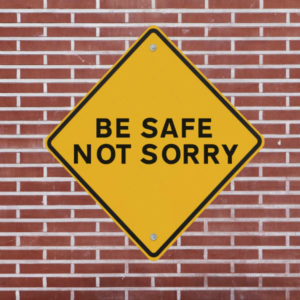Winter can take a toll on your chimney. Excessive moisture from rain, sleet and snow, freezing temperatures and high winds all can cause damage to your chimney’s masonry. That means that even if you had your chimney inspected before the start of the season, you could have masonry damage that compromises your chimney’s integrity or leaves your home susceptible to water damage this winter.
 With that in mind, it’s important that you stay on the lookout for masonry damage to your chimney and fireplace this winter. While there is no substitute for a professional chimney inspection when it comes to spotting damage, there are some things you can be on the lookout for this winter.
With that in mind, it’s important that you stay on the lookout for masonry damage to your chimney and fireplace this winter. While there is no substitute for a professional chimney inspection when it comes to spotting damage, there are some things you can be on the lookout for this winter.
To check your chimney for masonry damage:
• Inspect mortar joints. During winter’s freeze-thaw cycles, mortar joints remain especially vulnerable to damage. Mortar absorbs water, and when temperatures drop and the water freezes, the expanding water can cause the mortar to crumble away. Deteriorating mortar joints can allow water to seep into the chimney and cause further damage. Extensive erosion of a chimney’s mortar joints can compromise the structural integrity of the chimney. Make sure you inspect your chimney’s mortar joints periodically throughout the winter.
• Look for brick fragments or broken bricks. Just like mortar joints, a chimney’s bricks absorb moisture, and when temperatures freeze, the water inside the bricks can cause pieces of the bricks to pop off of the chimney face. The process, referred to as spalling, is unsightly and can lead to further chimney damage. When inspecting your chimney, look for spalling bricks on the chimney exterior, and check the ground for brick fragments.
• Check your chimney crown. Chimney crowns, the masonry top to your chimney, are often constructed of the wrong materials, which leaves them prone to premature deterioration. Even properly constructed chimney crowns can crack or crumble over time. Without getting up on the roof, it can be difficult to determine the state of your chimney crown, but you can use a pair of binoculars to spot severe damage from the ground.
• Look over your firebox. Sometimes, masonry damage can make itself evident in your firebox. Flue tiles can crack and crumble during the winter, and water can make its way into the chimney and firebox if the chimney’s outer masonry is damaged. Inspect the floor of your firebox for broken pieces of flue tile, and be on the lookout for rust on the damper, fireplace grate or fireplace doors, which can be a sign that water is finding its way into your chimney via exterior masonry damage.
Count on Us!
If you notice signs of masonry damage on your chimney this winter, call Environmental Chimney Service to schedule an inspection today! Our masonry experts can look over your chimney damage and help prescribe the best course of repairs to restore the look and function of your chimney, and to keep your chimney and your home safe from further damage this winter.
